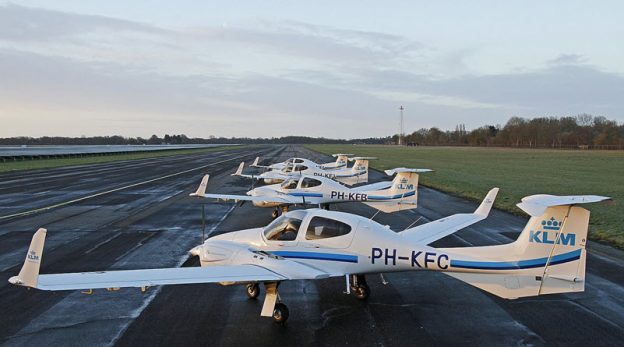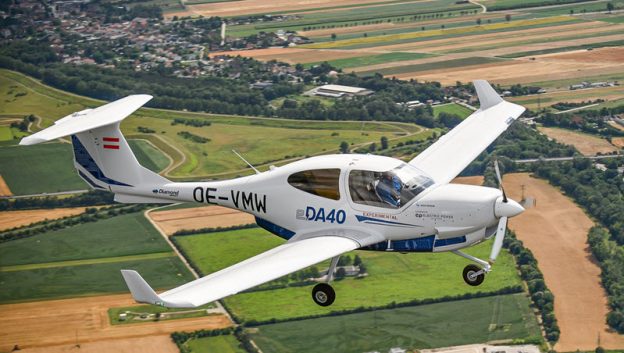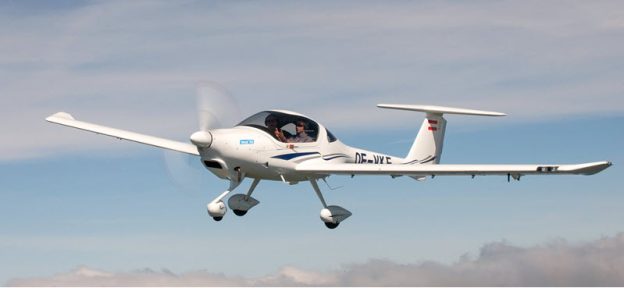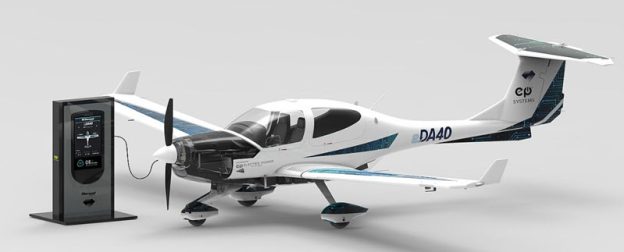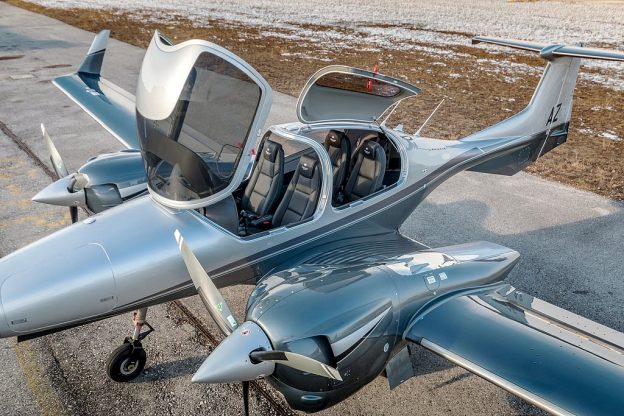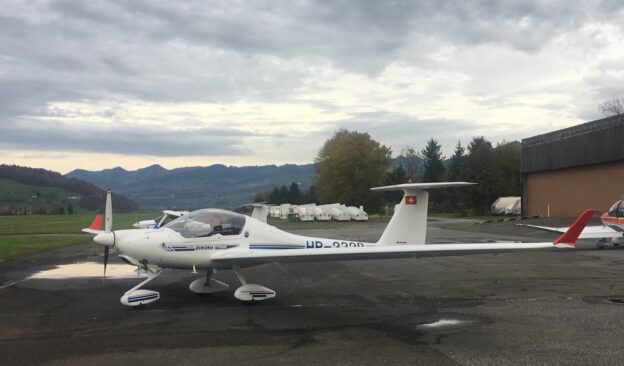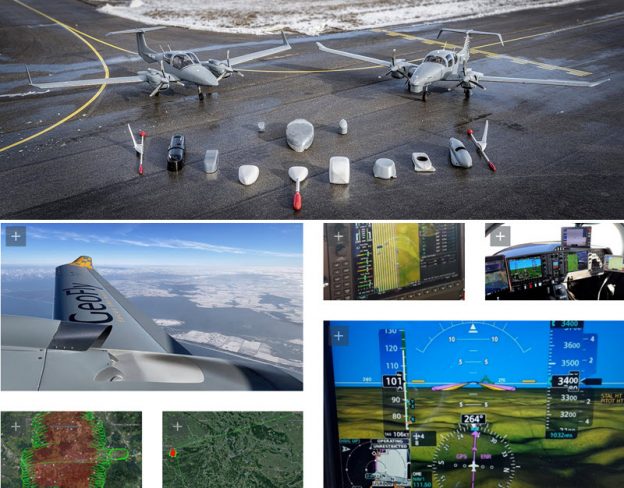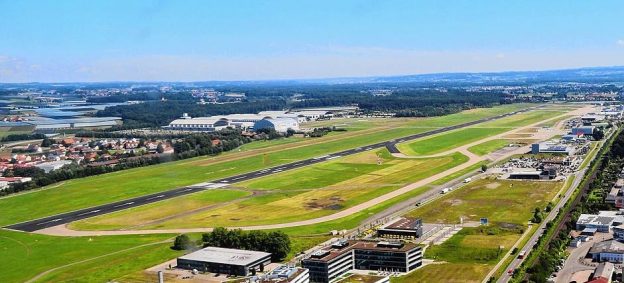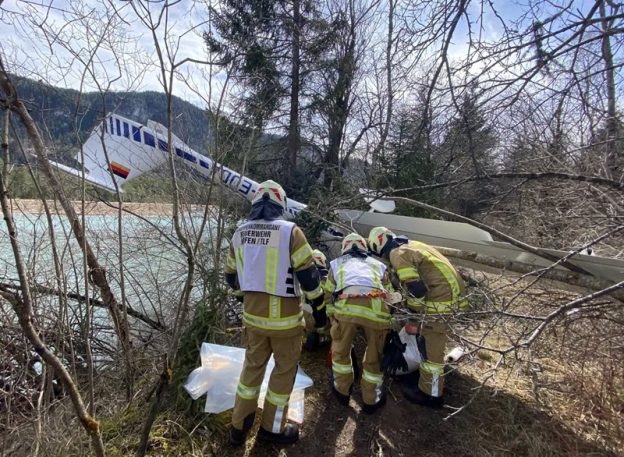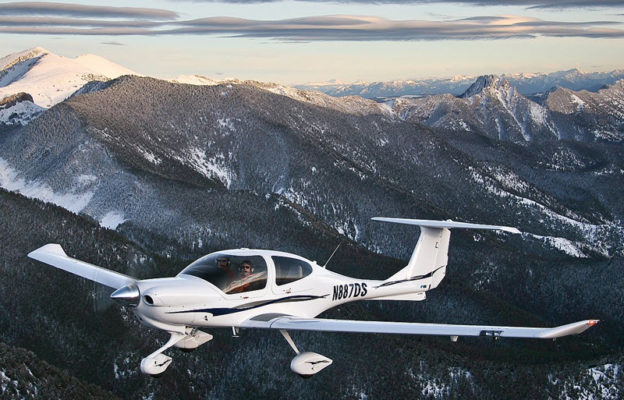Ein Kleinflugzeug des Typs Diamond DA 42 NG hat in der Luft über Liebenau eine Tür verloren. Sie schlägt auf dem Gelände der St. Lukas-Klinik ein. Verletzt wird dabei niemand. Was wie eine Szene aus einem Film klingt, hätte böse enden können. Weil der Pilot eine technische Warnung des Systems ignorierte, ermittelt zwar die Polizei Friedrichshafen – die Bundesstelle für Flugunfalluntersuchung (BFU) hingegen nicht. Der Unfall werde von den Behörden als eher „geringer Vorfall“ eingestuft, erklärt Flughafensprecher Bernd Behrend auf Nachfrage. „Ich würde sagen, der Pilot hat ganz schön Glück gehabt. Wäre das Teil jemandem auf den Kopf gefallen, wäre das anders verlaufen“, so der Flughafensprecher. Der 45-jährige Pilot war mit der viersitzigen Maschine in Friedrichshafen gestartet und war auf dem Weg zum Flughafen Zürich. Nach Polizeiangaben gilt er „insgesamt als erfahren“.
Wem die Maschine gehört
Die Maschine ist regelmäßig auf dem Flugfeld in Friedrichshafen zu sehen, berichtet Tobias Schnell von der Flugschule des Luftsportclubs Friedrichshafen (LSC), die sich am Flughafen Friedrichshafen befindet. „Sie gehört einer Flugschule in Zürich“ und sei vermutlich von dieser vermietet worden. Schnell, der seit 20 Jahren als Fluglehrer arbeitet, kennt die Maschine diesen Typs. „Die Tür geht nach oben auf. Wenn ein Luftzug einströmt, kann sie abreißen.“ Welche Folgen ein zu Boden fallendes Flugzeugteil haben kann, lässt sich laut BFU nicht pauschal beantworten. Die Energie eines Objekts richte sich immer nach dem Gewicht und der Fallhöhe, heißt es in einer Antwort allgemein. Nun ist es an der Polizei zu klären, wie genau sich der Unfall zugetragen. Die BFU hat zwar eine Meldung zu dem Vorfall erhalten, untersucht das Ereignis aber nicht, da es sich nicht um einen Unfall oder eine sogenannte schwere Störung handle. Die Polizei spricht von einem Pilotenfehler und schließt einen technischen Defekt aus. Warum also die hintere linke Kabinentür beim Steigflug abriss und zu Boden ging, ist Gegenstand der Ermittlungen.
Tür wiegt etwa sieben Kilogramm
Fest steht allerdings, dass das zweimotorige Kleinflugzeug eine Höhe von 3500 Fuß (rund 1050 Meter) über Grund erreicht hatte, als die rund sieben Kilogramm schwere Tür abriss, berichtet eine Sprecherin des Polizeipräsidiums in Ravensburg. Ebenfalls gesichert ist, dass der Pilot vom System auf das Problem mit der Tür aufmerksam gemacht wurde und trotzdem losflog. Der Tower selbst hat keine Kenntnis von solch einer Warnung, denn „eine fehlerhafte Türverriegelung ist von außen nicht erkennbar“, teilt der Flughafensprecher mit. Nun ermittelt also die Polizei gegen den Piloten wegen „gefährlichen Eingriffs in den Luftverkehr“ – bei der Staatsanwaltschaft liegt der Fall laut der Polizei noch nicht.
Mitarbeiter sieht etwas „zu Boden segeln“.
Christoph Möhle, Sprecher der Stiftung Liebenau, zu der die St. Lukas-Klinik gehört, nennt es „Glück im Unglück“, dass die Absturzstelle zwischen den Jahren offiziell geschlossen und daher menschenleer war. Denn das Grundstück ist ein Garten mit Spielgeräten, das der Eltern-Kind-Station der St. Lukas-Klinik als Aufenthaltsort dient. „Wir sind alle froh, dass nichts passiert ist“, so Möhle. Ein Mitarbeiter habe am Freitagnachmittag etwas zu Boden segeln sehen und sei gemeinsam mit dem Stationsleiter der Tagesklinik in den Garten gegangen, um zu sehen, was los ist. Zu zweit hoben die beiden Männer die Flugzeugtür auf, die neben einer Schaukel lag und verständigten die Flughafenpolizei. Dort erfuhren sie, dass tatsächlich eine Türe vermisst werde. Wenig später trafen Polizeibeamte ein, die alles dokumentierten und das Flugzeugteil mitnahmen. Die Maschine selbst steht inzwischen in einer Halle der am Flughafen angeschlossenen Wartungsfirma, damit sie untersucht werden kann, bestätigt Flughafensprecher Behrend.
Flugzeuge verlieren nur selten eine Tür
Dass ein Flugzeug in der Luft eine Tür verliert, kommt sehr selten vor. Seit 2012 verzeichnet die BFU im Inland fünf und im Ausland drei Fälle, bei denen sie beteiligt war. „Ich habe das in meiner 30-jährigen Flugzeit noch nie mitbekommen“, bestätigt auch Fluglehrer Schnell. Schließlich gebe es regelmäßige Kontrollen. Ähnlich wie beim TÜV werden Kleinflugzeuge wie die Diamond 42 NG jährlich auf ihre Lufttüchtigkeit geprüft und nach 100 absolvierten Flugstunden gewartet, berichtet Schnell. Zudem sei eine sogenannte Vorflugkontrolle durch den Piloten vorgeschrieben, ehe er mit seiner Maschine in die Lüfte steigen darf. Quelle: ‚Die Schwäbische‚. Typähnliches Foto: Diamond Aircraft.
Diesen Beitrag teilen mit:
Gefällt mir:
Gefällt mir Wird geladen …




